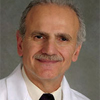

 |
Yusuf Hannun Prof. Yusuf Hannun received his medical degree from the American University of Beirut and completed a fellowship in hematology/oncology and did postgraduate work in biochemistry at Duke University where he also held a Wayne Rundles Professorship of Medical Oncology. In 1998, he was recruited as the Ralph Hirschmann Professor and Chair of Biochemistry & Molecular Biology at the Medical University of South Carolina where he also held a position as Deputy Director of the Hollings Cancer Center. He is currently Director of Stony Brook Cancer Center, Vice Dean for Cancer Medicine, and Joel Kenny Professor of Medicine at Stony Brook University, USA. |
|
|
 |
Lina Obeid Prof. Lina Obeid received her medical degree with distinction in 1983 at the American University in Beirut, Lebanon, and was inducted into the Honor Medical Society AOA. She performed residency in Internal Medicine at Duke University, fellowship training in Endocrinology and Geriatrics, and post-doctoral work at Duke. Prof. Obeid rose through the ranks at Duke University to become Associate Professor of Medicine and Cell Biology. In 1998 she was recruited to the Medical University of South Carolina in Charleston, where she served as the Boyle Professor of Medicine in the Division of Geriatrics, and as Professor of Biochemistry and Molecular Biology and Staff Physician at the Charleston Veterans Affairs Hospital. Prof. Obeid became Associate Director of the MD/PhD training program at MUSC and Director for an NIH-funded Center of Excellence in Biomedical Research on Lipidomics and Pathobiology. In 2012 she was recruited to become Professor of Medicine and Dean for Research at Stony Brook University, USA. |
|
|
 |
Frances Platt Prof. Frances Platt obtained a BSc in Zoology at Imperial College, University of London, and a PhD from University of Bath, in Animal Physiology. She was a post-doctoral fellow at Washington University Medical School, and Senior Research Scientist at Monsanto in St Louis, USA. In 1989, she was recruited as Senior Research Scientist at the University of Oxford where she also held a position as Reader in Glycobiology. She is currently Professor of Biochemistry and Pharmacology at the University of Oxford, UK. |
|
|
 |
Liana Silva Liana Silva obtained a Biochemistry degree at Faculdade de Ciências, Universidade de Lisboa, and a PhD in Chemistry (Molecular Biophysics) at Instituto Superior Técnico (IST), Universidade Técnica de Lisboa. She did postgraduate work at Weizmann Institute of Science (Israel) and in Centro Química-Física Molecular (IST). She is currently Assistant Researcher at Faculdade de Farmácia da Universidade de Lisboa in the framework of the program Compromisso para a Ciência 2008, from Fundação para a Ciência e Tecnologia (FCT). |
|
|
|
Vítor Costa Vítor Costa obtained a Biochemistry degree at Universidade do Porto and a PhD in Biomedical Sciences at Instituto de Ciências Biomédicas Abel Salazar (ICBAS), Universidade do Porto. In 1998, he was recruited as Assistant Professor at ICBAS where he currently holds a position as Associate Professor. He is principal investigator at Instituto de Biologia Molecular e Celular (IBMC), Universidade do Porto, since 2002 and became group leader at IBMC in 2011. Vítor Costa´s research has focused on the role of bioactive sphingolipids in the regulation of signalling cascades that govern mitochondrial function, redox homeostasis, apoptosis and ageing, using the yeast Saccharomyces cerevisiae as model system. His group has recently implicated the interplay between sphingolipid and nutrient signalling in the mitochondrial dysfunctions and premature ageing exhibited by a yeast model of Niemann Pick type C disease. |
|
|
Rua do Campo Alegre, 823
4150-180 Porto, PORTUGAL
Tel +351 226 074 900 | WWW.IBMC.UP.PT
